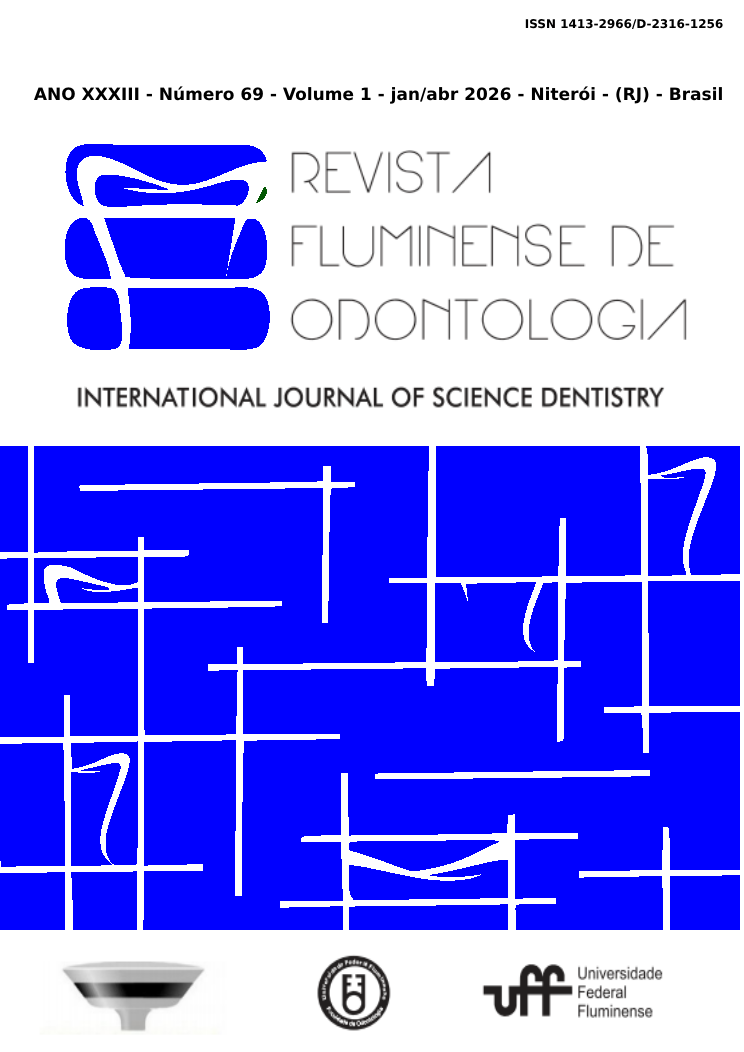USO DA TOMOGRAFIA COMPUTADORIZADA PARA A AVALIAÇÃO DO NERVO ALVEOLAR INFERIOR NAS CIRURGIAS DE TERCEIROS MOLARES: REVISÃO NARRATIVA DA LITERATURA
DOI:
https://doi.org/10.22409/ijosd.v1i69.63593Abstract
Um dos procedimentos mais comuns no dia a dia clínico do Cirurgião-Dentista (CD) é o de exodontia de terceiros molares inferiores. Dentre os exames de imagem que o CD pode lançar mão para melhor analisar o caso temos a Radiografia Panorâmica (RP) e a Tomografia Computadorizada de Feixe Cônico (TCFC), no entanto o uso da TCFC deverá levar em conta tanto aspectos clínicos quanto do próprio paciente. Discorrer sobre as indicações da TCFC e RP para exodontia de terceiros molares inferiores. Para coleta dos artigos foi realizado o cruzamento dos operadores boleanos “AND” e “OR” junto aos descritores e termos livres Decs/Mesh nos idiomas português e inglês, sendo eles: “Tomografia Computadorizada” ou “Computed Tomography”, “Nervo Alveolar Inferior” ou “Inferior Alveolar Nerve”, “Terceiro molar” ou “Thir Molar”, “Radiografia Panorâmica” ou “Panoramic-X-Ray”. Tanto a RP quanto a TCFC apresentam suas especificidades, as duas surgiram em contextos históricos distintos, no entanto ambas apresentam resultados de imagem importantes para o correto diagnóstico e planejamento cirúrgico. A RP e TC se apresentam como dois exames de imagens extremamente importantes para o planejamento de exodontias de terceiros molares em íntimo contato com o nervo alveolar inferior. Cabe ao CD analisar até que ponto essa dose de radiação é relevante, o respaldo legal que uma técnica poderá trazer em detrimento de outra.
Palavras-chave: Exodontia, Radiografia Panorâmica, Tomografia Computadorizada de Feixe cônico (TCFC).





